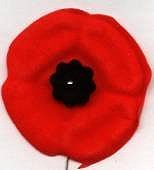
|
They shall not grow old, as
We that are left grow old.
Age shall not weary them,
nor years condemn.
At the going down of the
sun and in the morning
We will remember them.
|
THE BEAUFORT
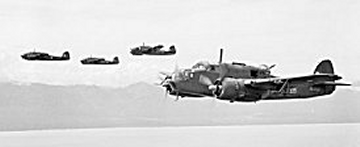
The Beaufort was a slow aircraft, with a top speed of
only 265 mph (430 km/h), which dropped to a mere 225 mph (360 km/h) when
carrying a torpedo. Although it did see some use in the torpedo bomber
role, notably in attacks on the Scharnhorst and Gneisenau while in port
in Brest, the Beaufort was more often used as a mine-laying aircraft while
in European service. It saw considerable action in the Mediterranean theatre,
where it helped put an end to Axis shipping supplying Rommel in North Africa.
Sometimes
I Wonder
This poem was written in Malta, June 1942, by Sergeant George
Hodson. The youngest member at that time of the aircrews of 217 Squadron.
Sergeant Hodson sat at his bedside one night and wrote this:
Sometimes I wonder
Will I live
To see the fight for freedom won,
And then begin the fight again
Against men of greed and gain,
Who would our land in post war years
Fill it once more with grief and tears
With promises heard once before
A land for heroes fit to live in.
Is this the land from whence we heard
Those words that now are scorned
By men who from the last Great War remain
Some blind, some gassed, some maimed.
The rest returned for peace and rest
For which they fought their level best.
Only for some was meant this peace,
For others it meant begging in the streets,
Long waits in queues for jobs that never came.
Sometimes I wonder
Will I live to see it all again
Sgt. George Hodson, June 1942 Malta
Sadly Sergeant George Hodson did not live to see it all again.
He was lost a week later on July 3, 1942 age 19 years. This poem has not
previously been published but has been kept by his friend, Mr, Harry Mallaby,
who was himself a Member of 217 Squadron.
Further particulars on 217 Squadron and the loss of George
Hodson:
217 Squadron, Coastal Command, Royal Air Force Volunteer
Reserve. 1942
The Beaufort aicraft of 217 squadron were en-route to
Ceylon with the first nine aircraft leaving RAF Leuchars, Fife in May 1942,
proceeding via Gibraltar and Malta and arriving in Malta in the afternoon
of 10th June. Due to unservicabilities with the Torpedo loading and dropping
systems, all nine aircraft were grounded to sort out the problems and the
Squadron was then kept in Malta to take part in a number of missions against
enemy convoys. One of these missions occurred on Friday, 3rd July 1942,
when seven Beaufort aircraft escorted by five Beaufighters were due to
depart Ta Qali airfield in Malta to attack a convoy south of Zante Island
off the coast of Greece. Two of the Beauforts failed to start and the remaining
five took off at 18:30, but of these, two aircraft developed engine trouble
and turned back leaving three aircraft to press on with the attack. Two
of these 4-man crewed aircraft, L9893 and AW240, were shot down in the
sea by flak, the third, DD993, was hit in the tail but managed to reach
Malta again where it crashed at 01:00.
Sergeant George Hodson was a member of the crew of Beaufort
AW240.
Malta Memorial
Sergeant HODSON George Leonard 1259043, 217 Squadron, Coastal
Command, Royal Air Force Volunteer Reserve. Died 3rd July 1942. Age 19.
Son of L. P. and Ann Hodson, of Hudson, Province of Quebec, Canada. Commemorated
on MALTA MEMORIAL, Malta. Panel 4, Column 1.
Tom Cousins
- WAG 7BR Squadron
I’m writing today, probably as the result of seeing the
TV show of the Swordfish attacking the German battleship. Some great pictures
of the plane. Of course the Blackburn Shark was a better airframe, especially
the partially covered cockpit area. However the engine, at first, was not
equal to the power plant in the Swordfish.
Speaking of engines takes me back to the following entry
in my log book:
“22-7-42 14:55 Shark 549 Pilot WOII
Clark WT Opr. Myself
Remarks: A/S Patrol – forced down Ellis Isl. Flt
Time 2:30”
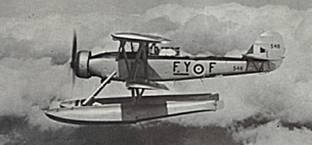
Blackburn Shark 548
The day started out on the wrong foot. Pop Clark had invited
the station preacher to come along for the ride. Apparently the Reverend
had been bugging Pop for the experience. As we left from our mooring in
Seal Cove, Prince Rupert, B.C. at low tide, in the rain as usual, everything
in the aircraft wet, and slippery on the pontoon. Eventually, by pushing
on the rear end of the Reverend, I managed to boost him into the back cockpit
and climbed in after him. We were off.
Half way around our patrol route the engine quit. Quiet!
I had no idea how much noise came from the wings and struts. Then Pop Clark
came on the intercom, “If you are saying a prayer Reverend, say one for
the three of us.” Pop then turned into wind and made a wonderful dead engine
landing on the heavy seas.
The wind was fresh and the waves were bigger than I had
expected. I climbed out of the cockpit onto the pontoon, then I had to
cross on the narrow strut, under the hot engine, to the other pontoon to
release the drogue. This was difficult with the waves coming over the pontoons.
Once the drogue was release our movement steadied.
The Reverend announced he could see a flashing light to
the East. It was a signal light and, although we could see the light, we
could not see the vessel. I instructed the Reverend to plug in the Aldis
lamp and asked him to flash a light back in the direction of the light.
I then got Pop to have pencil and paper ready and, standing on the heaving
pontoon, read the message calling the letters out to Pop and he wrote them
down. I then instructed the Reverend how to send a reply. We were up to
our armpits in water and the ship’s message was, “do you require assistance?”
The request sounded ludicrous. However the Captain of the vessel knew what
we didn’t, that the area between his ship and our plane, was marked by
many shallows, rocks, and small islands.
The vessel responded to our request for help and the RCN
patrol boat, The Cougar (a converted yacht) arrived within the hour. They
passed us a line and I attached it to the drogue rope. I don’t remember
how we boarded the Naval vessel, but I do remember the lunch. We were served
my favourite, sausage and peanut butter sandwiches, items never seen in
our mess.
After our landing in the ocean, I had tried to get through
to base on the radio, without success. Signals around that area were spotty.
Our failure to contact Base caused an investigation to be launched by Western
air Command H.Q. Two signals experts arrived on the Station. They did some
tests from the air, but unfortunately, their Shark crashed on landing and
the depth charges exploded, killing one of the technicians and badly injuring
the other. The Pilot survived the crash.
Pat Miller and I heard that Taylor was on the plane. We
thought it was T.S. Taylor, a blond WAG on our Squadron. We rushed
down to the marine section. The first person they landed was Taylor, but
when we saw black hair, we knew it was not our T.S. Pat and I carried
the injured man up to the ambulance and accompanied him to the hospital.
He was a mess, but recovered.
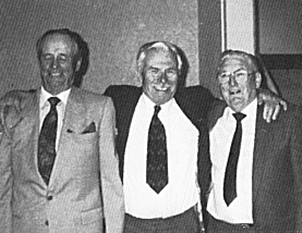
T.S Taylor, Pat Miller, Tommy Cousins,
Ex-AG’s reunion, Winnipeg 1992.
Swordfish
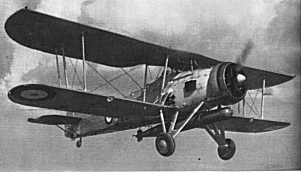 The
first Blackburn Shark manufactured by Blackburn Aircraft Limited of Brough,
East Yorkshire in England, was powered with the 700 hp. Armstrong
Siddeley Tiger IV engine. The MKIIs had the 760 hp. Tiger engine. These
engines proved to be maintenance prone, due to extensive bearing wear.
The Swordfish was equipped with the Pegasus engine, which was more efficient.
Because of this The British Navy adopted the Swordfish.
The
first Blackburn Shark manufactured by Blackburn Aircraft Limited of Brough,
East Yorkshire in England, was powered with the 700 hp. Armstrong
Siddeley Tiger IV engine. The MKIIs had the 760 hp. Tiger engine. These
engines proved to be maintenance prone, due to extensive bearing wear.
The Swordfish was equipped with the Pegasus engine, which was more efficient.
Because of this The British Navy adopted the Swordfish.
The British Government unloaded their unwanted Blackburn
Sharks by selling them to the fledgling Canadian Air Force. The Sharks,
powered with the Tiger engines, were purchased from Britain by the Canadian
Government in 1937/38. In 1938/39 the Canadian Sharks were modified with
the Pegasus engine.
The Blackburn Sharks carried out shipping and anti submarine
patrols from Stations on the North west coast of British Columbia from
1940 to 1944, first from #6 BR Squadron, Alliford Bay, Queen Charlotte
Islands, then, after the Japanese entered the war, from #7 BR Squadron,
Seal Cove, Prince Rupert. B.C.
MEMORIES OF PERSONAL EXPERIENCES
FROM WWII
By L.J. (Jack) Walter
This booklet was put together by Lois, Jack Walter's
daughter. Lois writes, “when we were growing up, Dad seldom spoke of the
war. As he mentions in one of his writings, we often heard him having nightmares,
re-tracing in his sleep, the events that he, and so many of his contemporaries,
suffered through. When the Gulf war was in full swing, it seemed to bring
back a lot of memories, and a need to get it out of his system. We, the
family, are grateful for his poems and writings, through them we can begin
to understand a little of what went on.”
Here is Jack's remarkable service career:
Jack Walter joined the RCAF in 1940 as an Air Gunner.
In August 1941 he went overseas to England as a WAG. In June 1942 he was
re mustered as a bomb aimer in 7 Squadron, RAF, and flew 11 ops on Sterlings.
In August 1942 he transferred to 15 Squadron RAF. He flew four ops on Sterlings,
then on September 18, while he was in hospital, his entire crew went missing.
He flew one more op and was then transferred to 426 Squadron RCAF on November
13, 1942. Stationed in Dishforth in Yorkshire, he did another 15 ops. on
Wellingtons.
In July 1943, he took an instructor’s course and MK XIV
bombsite and returned to OTU as an instructor on techniques of bomb aiming
and bombsights.
In May 1944 Jack took leave an returned to Canada for
a short period, then returned to England in September 1944 to join 405
Pathfinder Squadron
RCAF at Gransden Lodge. He was a Bomb Aimer in a Lancaster
bomber until January 1945 when he completed his second tour.
After the second tour, Jack served as an instructor at
Honeybourne. He returned to Canada as a F/L and served as a recruiting
officer. He was then sent on a Pilot’s course in Centralia, Ont. He flew
on 435 Transport Squadron out of Edmonton for three years.
In 1952 Jack transferred to 430 Squadron, Fighter Command,
flying Sabres. He flew across the Atlantic to Scotland and Grostenquin,
France. While there he was sent to Austria for three months to teach winter
survival skills to RAF crews. Jack was discharged in September 1953.
Many readers will identify with Jack’s following article.
That Damn Front Turret
The first Squadron I was posted to flew Sterling
bomber with F/N turrets. As soon as we were airborne, I was ordered into
that damn front turret, and the bulkhead door closed behind me by the Flight
Engineer.
On the ground, wearing only my battle dress I manoeuvred
around and opened the turret door and with a bit of effort, opened the
bulkhead door and got back into the aircraft. When dressed in full flying
attire, two or three layers of clothing, leather bomber jacket, leather
pants, parachute harness and Mae West, even Houdini would have had a hard
time getting out of that damn front turret.
On an “Op” to Frankfurt we were badly shot up by enemy
fighters and were heading for the deck three miles below. The pilot’s voice
came over the intercom “Prepare to bail out.” Where was my bulkhead door
opener? Likely pinned to the side of the roof of the aircraft by “G” forces,
like everything else that was not belted down. Before the Pilot gained
control again, that old Sterling went through manoeuvres that even a fighter
shouldn’t attempt.
Trapped in that damn front turret, full of panic, I must
have died a thousand deaths. It only lasted a few minutes, but seemed like
a lifetime.
I could never see the sense of having anyone in the front
turret at night at the height we flew. Even flying at eight hundred feet,
laying mine at night, you were over a flak ship or coastal battery before
you saw them.
The front turret was extremely cold and noisy with a hundred
and fifty mile an hour gale roaring in around the gun ports and other turret
openings. In the front turret you had a ringside view of the impossible
wall of flak, plus the belt of search lights at night.
The only good thing about that damn front turret was being
let out of it to drop the bombs, and being the first in the crew to cross
the English coast on returning from the “Op”.
Many of Jack’s poems are included in the booklet.
One that touched your Editor was the following.
HOLD MY HAND
Hold my hand and cuddle up tight,
as I can’t see your face tonight.
Hold my hand whose strength has gone.
Hold my hand from dark to dawn.
I held your hand in old London town
when Nazi bombs came raining down,
when our bedroom was filled with flying glass
from one of the “Doodle Bugs” deadly blast
I held your hand when off “Ops” on leave
a few days together – a bit of reprieve.
I held your hand as we walked downtown
looking for a ring that would tie me down.
So hold my hand and hold it tight
and I will sleep sound throughout the night.
Hold my hand forever dear
then I will know that you are here.
Jack Walter married the young lady who held his hand,
and their daughter Lois, arrived in ‘Old London town when Nazi bombs came
raining down’. But as Lois says, “that is another story.”
Jack Walter passed away in 1998. Lois Volk is to be
congratulated for helping to keep his memory alive.
War Museum
Plaque
Suggested re-wording of the controversial Plaque regarding
Bomber Command at the War Museum in Ottawa.
The strategic bombing campaign against Germany, an important
part of the Allied effort that achieved victory, remains a source of controversy
today.
Strategic bombing enjoyed wide public and political support
as a symbol of Allied resolve and a response to German aggression. In its
first years, the air offensive achieved few of its objectives and suffered
heavy losses. Advances in technology and tactics, combined with Allied
successes on other fronts, led to improved results. By war’s end, Allied
bombers had razed portions of every major city in Germany and damaged many
other targets, including oil facilities and transportation networks. The
attacks blunted Germany’s economic and military potential, and drew scarce
resources into air defence, damage repair, and the protection of critical
industries.
Allied aircrew conducted this grueling offensive with
great courage against heavy odds. It required vast material and industrial
efforts and claimed over 80,000 Allied lives, including more than 10,000
Canadians. While the campaign contributed greatly to enemy war weariness,
German society did not collapse despite 600,000 dead and more than 5 million
left homeless. Industrial output fell substantially, but not until late
in the war. The effectiveness and the morality of bombing heavily-populated
areas in war continue to be debated.
THE VETERAN
ON OUR TEN DOLLAR BILL
 If
you have a Canadian $10 bill, look at the back right side of the bill.
You will see a veteran standing at attention near the Ottawa war
memorial. His name is Robert Metcalfe and he died last month at the age
of 90.
If
you have a Canadian $10 bill, look at the back right side of the bill.
You will see a veteran standing at attention near the Ottawa war
memorial. His name is Robert Metcalfe and he died last month at the age
of 90.
That he managed to live to that age is rather remarkable,
given what happened in the Second World War. Born in England, he was one
of the 400,000 members of the British Expeditionary Force sent to the mainland
where they found themselves facing the new German warfare technique - the
Blitzkrieg.
He was treating a wounded comrade when he was hit in the
legs by shrapnel. En route to hospital, his ambulance came under fire from
a German tank, which then miraculously ceased fire. Evacuated from Dunkirk
on HMS Grenade, two of the sister ships with them were sunk. Recovered,
he was sent to allied campaigns in north Africa and Italy. En route his
ship was chased by the German battleship Bismarck. In North Africa he served
under General Montgomery against the Desert Fox, Rommel.
Sent into the Italian campaign, he met his future wife,
a lieutenant and physiotherapist in a Canadian hospital. They were married
one morning by the mayor of the Italian town, and again in the afternoon
by a British padre.
After the war they settled in Chatham where he went into
politics and became the warden (chairman) of the county.
At the age of 80 he wrote a book about his experiences
and on his retirement he and his wife moved to Ottawa.
One day out of the blue he received a call from a government
official asking him to go downtown for a photo op. He wasn't told what
the photo was for or why they chose him.
"He had no idea he would be on the bill," his daughter
said.
And now you know the rest of the story of the veteran
on the $10 bill.
CORRESPONDENCE
Dear Mr Moyles,
I was forwarded a copy of the piece titled "The Veteran
on the Ten Dollar Bill". The item just seemed a little too neat and I started
to check a few facts that were presented. these are my findings:
I certainly don't mean to sound critical, because the story
brings forward all of the emotions we are supposed to feel at reading such
a heart-warming tale. It would be nice to know who the veteran on
the bill really is, and what his own story might be.
Pro Patria
M.M. O'Leary
Captain
Regimental Adjutant, The RCR
CSN: 625-5039
Commercial: (519) 660-5275, ext 5039
Facsimile: (519) 660-5344
email: o'leary.m@forces.gc.ca
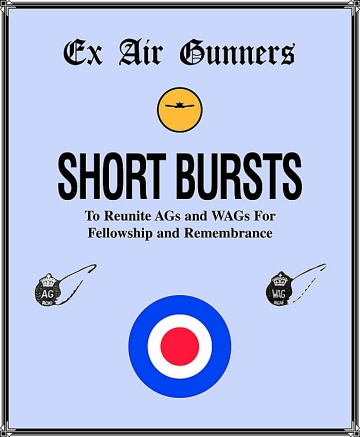




 The
first Blackburn Shark manufactured by Blackburn Aircraft Limited of Brough,
East Yorkshire in England, was powered with the 700 hp. Armstrong
Siddeley Tiger IV engine. The MKIIs had the 760 hp. Tiger engine. These
engines proved to be maintenance prone, due to extensive bearing wear.
The Swordfish was equipped with the Pegasus engine, which was more efficient.
Because of this The British Navy adopted the Swordfish.
The
first Blackburn Shark manufactured by Blackburn Aircraft Limited of Brough,
East Yorkshire in England, was powered with the 700 hp. Armstrong
Siddeley Tiger IV engine. The MKIIs had the 760 hp. Tiger engine. These
engines proved to be maintenance prone, due to extensive bearing wear.
The Swordfish was equipped with the Pegasus engine, which was more efficient.
Because of this The British Navy adopted the Swordfish.
 If
you have a Canadian $10 bill, look at the back right side of the bill.
You will see a veteran standing at attention near the Ottawa war
memorial. His name is Robert Metcalfe and he died last month at the age
of 90.
If
you have a Canadian $10 bill, look at the back right side of the bill.
You will see a veteran standing at attention near the Ottawa war
memorial. His name is Robert Metcalfe and he died last month at the age
of 90.
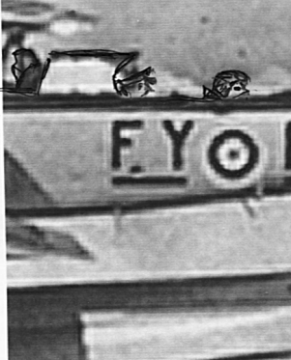 In
Seal Cove, Prince Rupert, we loaded our passenger into the back cockpit
of the Blackburn Shark and, out on the pontoon, I fed starter cartridges
into the engine to get the old girl fired up. I climbed into the cockpit
with the Reverend, and we were off.
In
Seal Cove, Prince Rupert, we loaded our passenger into the back cockpit
of the Blackburn Shark and, out on the pontoon, I fed starter cartridges
into the engine to get the old girl fired up. I climbed into the cockpit
with the Reverend, and we were off.